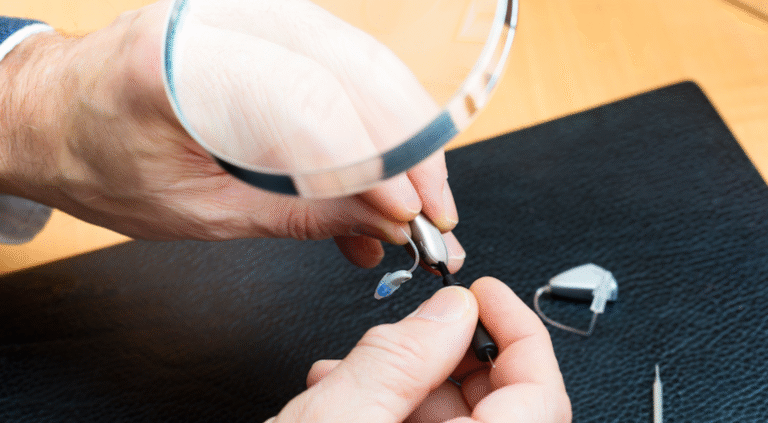For many people, hearing aids are more than just devices—they’re essential tools that make daily life possible. But like any piece of technology, they don’t last forever. At some point, you’ll face a decision: should you repair your existing device or invest in a new one? The right answer depends on your specific situation, budget, and long-term needs. While affordable hearing aid repair is often the quickest way to restore function, replacement might provide better value in certain cases. Let’s break it down.
Contents
- 1 Understanding the Costs Involved
- 2 When Repair Makes the Most Sense
- 3 When Replacement Becomes Inevitable
- 4 The Role of Technology Advancements
- 5 Factoring in Long-Term Value
- 6 Emotional and Lifestyle Considerations
- 7 How Professionals Help You Decide
- 8 Practical Tips to Reduce Costs
- 9 Finding the Balance Between Savings and Reliability
Understanding the Costs Involved
Repairs tend to look cheaper at first glance. Minor fixes—such as replacing tubing, microphones, or casing—can often be done quickly and at a reasonable cost. A full replacement, on the other hand, involves hundreds to thousands of dollars depending on the model and technology.
The key is to weigh the cost of frequent small repairs against the price of a new device. If you find yourself repairing your hearing aid every few months, those costs add up faster than most people expect.
When Repair Makes the Most Sense
There are plenty of situations where a repair is the smarter financial choice:
- Minor issues like battery door damage, clogged receivers, or faulty wiring.
- Newer models still under warranty or with parts that are easy to source.
- Sentimental comfort when you’re already adjusted to the fit and performance of your current device.
In these cases, repair gives you the benefit of keeping your current hearing aid functioning at its best without overspending.
When Replacement Becomes Inevitable
Repairs have their limits. There are clear signals that it may be time to invest in a new device:
- Repeated breakdowns even after multiple repairs.
- Outdated technology that no longer matches your lifestyle or hearing needs.
- Discontinued models where replacement parts are scarce or unavailable.
Replacing a hearing aid can feel like a large expense, but if you’re constantly paying for repairs, the math may actually tilt in favour of buying a new one.
The Role of Technology Advancements
Today’s hearing aids are far more advanced than those sold even five years ago. Features like Bluetooth streaming, rechargeable batteries, adaptive noise reduction, and AI-based sound adjustment have raised the bar for performance.
If your current device lacks these upgrades, sticking with it might mean missing out on improvements that could make daily conversations and activities significantly easier. Sometimes, replacement isn’t just about fixing a problem—it’s about gaining a much better quality of life.
Factoring in Long-Term Value
Affordability isn’t only about the upfront price. A newer hearing aid typically comes with a warranty, improved reliability, and less frequent maintenance needs. Over the long run, this can save you more money than patching up an older device repeatedly.
On the other hand, if your hearing aid is relatively new and functions well aside from a small issue, repair will almost always provide the best value.
Emotional and Lifestyle Considerations
It’s not all about dollars and cents. Comfort, confidence, and peace of mind matter, too. If a repaired device still feels unreliable or causes stress about whether it will work when you need it most, the savings may not be worth it. For many, investing in a new device provides reassurance that’s just as valuable as the improved performance.
How Professionals Help You Decide
Hearing care specialists can run diagnostics, assess wear and tear, and give you a realistic estimate of what to expect. They can tell you whether a repair is a temporary fix or if replacement will better serve your needs long-term.
Relying on professional guidance prevents costly trial and error while helping you make the choice that aligns with both your budget and hearing health.
Practical Tips to Reduce Costs
Whether you choose repair or replacement, a few habits can stretch your investment:
- Clean your hearing aids daily to prevent blockages and moisture damage.
- Store them in a protective case or dehumidifier when not in use.
- Replace wax guards and tubing regularly.
- Schedule routine check-ups to catch small issues before they become expensive.
These preventive steps reduce the likelihood of major repairs and help maintain the performance of your device for years.
Finding the Balance Between Savings and Reliability
At the end of the day, the decision between repair and replacement isn’t always straightforward. Affordable repair can be a lifesaver in the short term, but replacement often delivers more stability and value in the long run. The smartest move is to assess your device’s age, frequency of issues, and how well it meets your current lifestyle.
By considering both cost and quality of life, you’ll be able to make a decision that not only saves money but also supports your ability to hear clearly and confidently every day.
